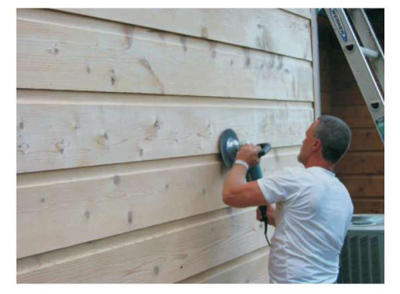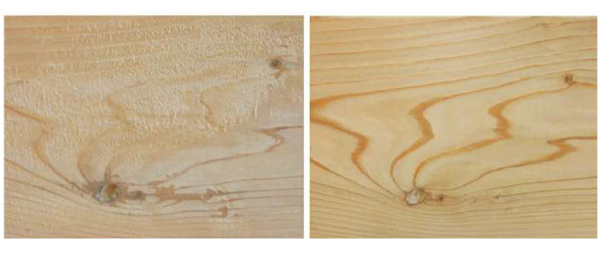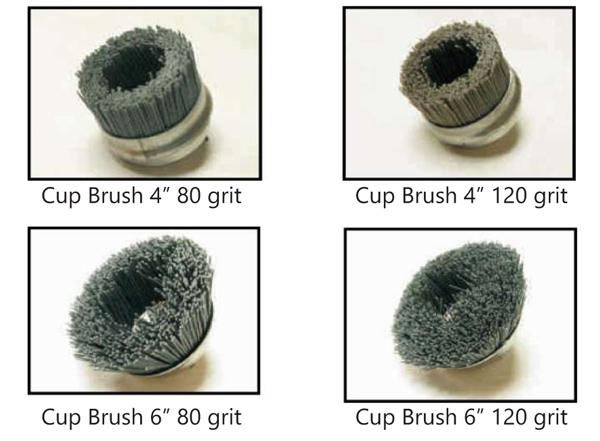Osborn Brushes require a buffer or polisher with 5/8 x 11 National Coarse (NC) threads. Although a constant speed buffer of around 1800 RPM will work, one with a variable speed is much easier to use and will do a better job.

So what are some applications for the use of Osborn Brushes?
1. When the surface has been stripped or pressure washed and you want to remove any feathering that may have occurred.
2. If the grain of the wood has been raised due to contact with water (mostly interior situations).
3. To remove mill glaze on interior and exterior wood surfaces.
4. To even out the texture of hewn surfaces since the flexible bristles reach the hills and valleys.
5. If a home has been blasted the use of an Osborn Brush can help reduce rough texture of the surface.
What are Osborn Brushes not suitable for?
1. To make a blasted surface completely smooth again.
2. To remove a finish.
3. To remove discolorations that are deep within the wood.
Osborn brushes are not an alternative to sandpaper or sanding disks. Sanders and sanding disks consist of rough, flat surfaces and will remove more wood on high spots than in depressions, whereas Osborn Brushes follow the contour of the surface. To correctly use an Osborn brush you never need apply much pressure to the buffer, just hold it in place and let the brush do the work.
We carry four different Osborn Brushes. For logs and log siding, we recommend using the flared 6” diameter brushes since they do a good job and are easy to use. The 4” brushes may be used for small or tight areas. For exterior surfaces 80 grit brushes should always be used. On interior surfaces you can use either 80 or 120 grit brushes.
Tools Required
Buffer or polisher with 5/8x11 National Course (NC) threads. Best speed is around 1800 RPM but varible speed is handy.


